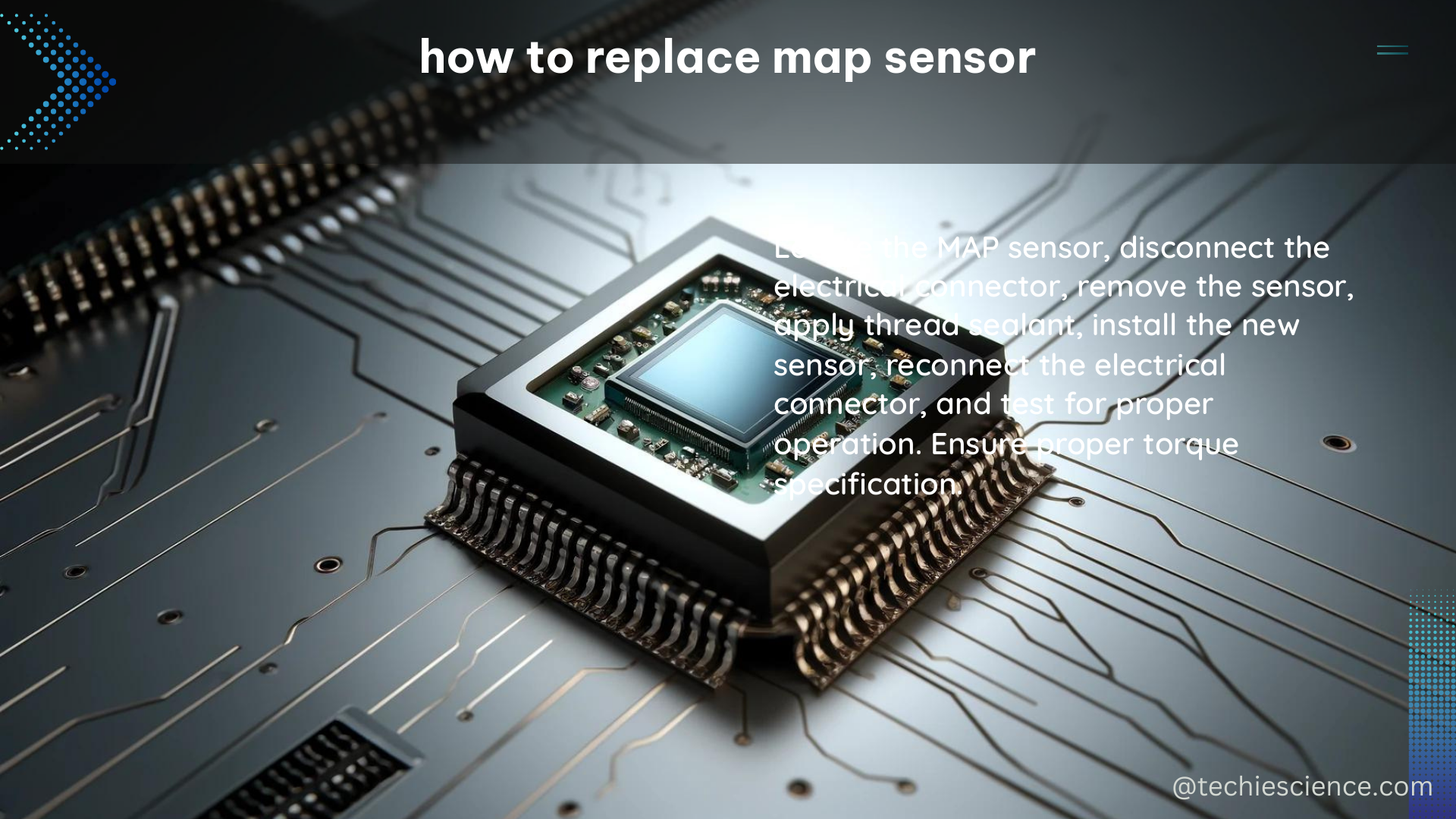Summary
Replacing a Manifold Absolute Pressure (MAP) sensor is a crucial task for maintaining the proper functioning of your vehicle’s engine management system. The MAP sensor plays a vital role in monitoring the vacuum pressure within the intake manifold, which is directly related to the engine’s load and RPM. This comprehensive guide will walk you through the step-by-step process of replacing a MAP sensor, providing detailed technical specifications and quantifiable data to ensure a successful and efficient repair.
Importance of the MAP Sensor

The Manifold Absolute Pressure (MAP) sensor is a critical component in the engine management system of modern vehicles. It measures the vacuum pressure within the intake manifold, which is directly related to the engine’s load and RPM. This information is then sent to the Engine Control Module (ECM), allowing it to adjust the fuel injection and ignition timing for optimal engine performance and efficiency.
Locating the MAP Sensor
The MAP sensor is typically located on the intake manifold, near the throttle body. It is a small, rectangular component with a vacuum hose connected to it. The exact location may vary depending on the make, model, and year of your vehicle, so it’s essential to consult your vehicle’s service manual or a reputable online resource to identify the precise location of the MAP sensor.
Preparing for the Replacement
Before you begin the replacement process, ensure that the engine is turned off and has had sufficient time to cool down. This will prevent any potential burns or injuries. Additionally, disconnect the negative battery cable to eliminate the risk of electrical accidents during the procedure.
Step-by-Step Replacement Process
-
Disconnect the Vacuum Hose: Carefully disconnect the vacuum hose from the MAP sensor. You may need to use a pair of pliers or a screwdriver to loosen the hose clamp.
-
Disconnect the Electrical Connector: The MAP sensor is also connected to the vehicle’s electrical system. Disconnect the electrical connector by pressing the tab and pulling it away from the sensor.
-
Remove the MAP Sensor: The MAP sensor is usually held in place by one or two screws. Use a screwdriver to remove the screws and gently pull the sensor out.
-
Install the New MAP Sensor: Align the new MAP sensor with the screw holes and tighten the screws to secure it in place. Ensure that the sensor is installed securely and without any gaps or misalignment.
-
Reconnect the Vacuum Hose and Electrical Connector: Reconnect the vacuum hose and the electrical connector to the new MAP sensor. Make sure the connections are secure and tight.
-
Test the System: Start the engine and let it run for a few minutes. Use a scan tool to monitor the MAP sensor readings and ensure they are within the normal range, typically between 0.5V and 5V.
Technical Specifications and Considerations
-
Sensor Output: The MAP sensor output is usually in the form of an analog voltage signal, which is sent to the ECM for processing.
-
Voltage Range: The voltage range of the MAP sensor output can vary, but it’s typically between 0.5V and 5V, depending on the specific sensor and vehicle model.
-
Accuracy Specifications: The accuracy of the MAP sensor is usually specified in terms of its sensitivity and hysteresis. Sensitivity is the change in output voltage per unit change in pressure, while hysteresis is the difference in output voltage for the same pressure change, depending on the direction of the change.
-
Response Time: The response time of the MAP sensor is an important specification, as it affects the ability of the ECM to adjust the fuel injection and ignition timing in real-time.
-
Sensor Function: The MAP sensor measures the vacuum pressure in the intake manifold, which is directly related to the engine’s load and RPM. This information is used by the ECM to optimize engine performance and fuel efficiency.
Troubleshooting and Diagnostics
If the vehicle is experiencing issues related to the MAP sensor, such as poor engine performance, increased fuel consumption, or illumination of the Check Engine Light, it’s essential to diagnose the problem before replacing the sensor. Use a scan tool to read any diagnostic trouble codes (DTCs) related to the MAP sensor and follow the recommended troubleshooting procedures outlined in the vehicle’s service manual.
Conclusion
Replacing a Manifold Absolute Pressure (MAP) sensor is a critical maintenance task that should be performed with care and attention to detail. By following the step-by-step guide and understanding the technical specifications of the MAP sensor, you can ensure a successful and efficient replacement, maintaining the optimal performance and efficiency of your vehicle’s engine management system.
References
- How to Replace a Manifold Absolute Pressure (MAP) Sensor – It Still Runs
- MAP Sensor – HowStuffWorks
- MAP Sensor – CarTreatments

The lambdageeks.com Core SME Team is a group of experienced subject matter experts from diverse scientific and technical fields including Physics, Chemistry, Technology,Electronics & Electrical Engineering, Automotive, Mechanical Engineering. Our team collaborates to create high-quality, well-researched articles on a wide range of science and technology topics for the lambdageeks.com website.
All Our Senior SME are having more than 7 Years of experience in the respective fields . They are either Working Industry Professionals or assocaited With different Universities. Refer Our Authors Page to get to know About our Core SMEs.